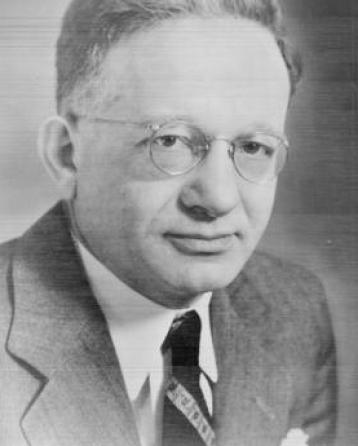Class struggles: The UFT story, part 1
by Jack Schierenbeck
For the rapidly vanishing corps of UFT oldtimers, Nov. 7 is as close as things get to a high holy day. The year was 1960. As the nation watched and wondered whether it would be Nixon or Kennedy, for several thousand New York City school teachers, that Monday before Election Day was a day of reckoning.
In direct defiance of the law forbidding strikes by public employees, they refused to report for work, putting jobs and careers on the line.
The union elders had long admonished their younger itchin’-for-a-fight comrades not to be so gung-ho. “Wait until you have a majority of teachers on your side before striking,” they were told. But there was no holding them back.
For their part, Jeannette and John DiLorenzo, teachers at JHS 142 in Red Hook, Brooklyn, were ready to walk. Though new to teaching, both were veteran organizers and activists. In a little more than a year, they had signed up nearly all of the teachers at their school.
Come Monday morning, it seemed as if all of Red Hook had turned out in support of their striking teachers. Parents were handing out refreshments, while longshoremen from the nearby piers and merchant seamen from the Seafarers Union were out carrying signs of support. As the morning bell rang, some 80 teachers were giving an open-air civics lesson on democracy.
But the DiLorenzos’ hearts would soon sink. They had been detailed to check on some 30 other schools in south Brooklyn. As they rode by one school after another, a depressing realization began to sink in. “It was a terrible feeling,” recalls Jeannette. “It was pitiful passing by all the elementary schools and not a soul coming out.”
By the time they returned to JHS 142, half the striking teachers had deserted the picket line and returned to their classrooms. Word was out. The strike had fizzled and the superintendent of schools had fired the strikers.
By day’s end, Dilorenzo found herself hoping “to find a way to get back in that building with some kind of dignity.”
Part 1
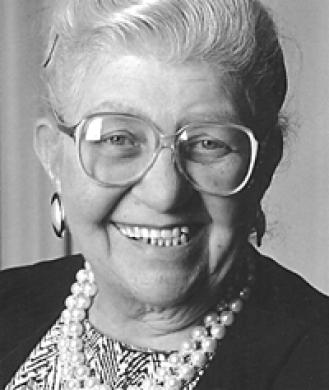
Jeannette DiLorenzo
Jeannette DiLorenzo remembers coming home from her first day as a teacher in “total shock.” She and her husband John had come into teaching at the tail end of the 1950s as a second career after organizing investigators, accountants and clerks at the city’s Department of Finance for AFSCME. “We were adults where we were and we’d come into a system where the teachers were treated as if they were children. It was almost a throwback to feudal times. The principal was the lord. You were the serf.”
Lou Carrubba had done a hitch in the service, so he was familiar with authority. But life in uniform was nothing compared to the nitpicking bullying that teachers suffered. “There was no real grievance machinery, no protections, no due-process procedures. Besides, if you complained they’d make your life even more miserable.”
So did teachers have to “eat a lot of crow” back then? “Today’s teachers have no idea. I’m telling you, hardly a day went by when we weren’t humiliated in one form or another,” responded Carrubba. “Let’s just say eating crow is a nice way of putting it.” Authoritarian rule had always been a sore spot for teachers. The original Teachers Union was founded in 1916 in small part “to fight oppressive supervision.”
The principal as tyrant
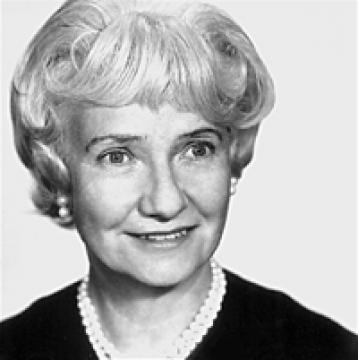
Alice Marsh
“The principal was a real matriarch, a tyrant,” recalled Alice Marsh, who started as a teacher in 1929. “They thought we were their children.”
Marsh recalled how she and her colleagues had devised a system of shared monitoring that would have saved them all from climbing five double flights of stairs four times a day. Marsh was chosen emissary and walked into a frosty reception with the principal.
“She looked at me with those steely blue eyes and said: ‘I am the principal of this school. Good day!’”
Around the same time, a first-year substitute teacher at a Brooklyn elementary school got an early lesson in the doctrine of principal infallibility. “She [the principal] came in and thought [my class] was too noisy and disorderly,” Si Beagle recalled shortly before his death in 1985. “Being a wise guy I said to her, ‘But this is creative disorder.’ She immediately told me to look elsewhere for work.
“In those days, the principal had the power to bring me up on charges by simply saying, ‘Mr. Beagle has shown conduct unbecoming a teacher.’ It was as simple as that.
“‘Conduct unbecoming a teacher’ meant anybody could be fired. Teachers would be asked to do work after school and you couldn’t refuse,” Beagle said. “When my principal said stay after school and coach the track team, you did.”
Abe Levine did likewise when ordered to skip lunch in favor of “yard duty.” Even by the early 1950s a teacher was still very much under the thumb of the principal. “I felt very much taken advantage of,” said Levine. “You were completely beholden to the principal. He was the king. We had absolutely no rights. We were afraid to speak up.”
Cheap labor
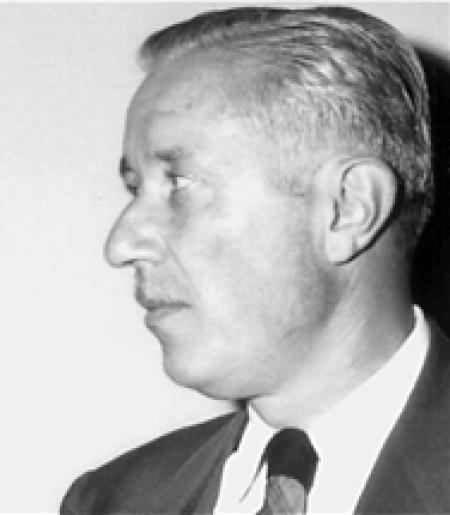
Jules Kolodny
Along with monastic-like obedience came a vow of poverty, or something close to it. So pitiful was the pay that there was a long standing joke that whenever teachers were introduced to each other they’d ask what the other did for a living. A New York Times editorial in January 1955 titled “Teach or Wash Cars,” posed the question why anyone would take a job teaching at $66 a week when washing cars paid $72.35.
The fact is, it wasn’t just anyone who went into teaching. Beginning in the mid-19th century, schoolwork was woman’s work, a natural extension of the home schooling that women had always done. Besides, as Diane Ravitch writes in her book “The Great School Wars,” school officials preferred women. With other “respectable occupations” all but closed, they’d be happy to take the job and all that came with it.
Low salaries were easily explained away. Teaching, after all, was only a “temporary” occupation before a woman settled into her real career as wife and homemaker. Besides, as unmarried women they could “afford” their jobs because they lived at home with their parents. Later, officials used marriage as a convenient rationale for miserly wages. When Brooklyn schoolteacher Mary Murphy successfully mounted a court challenge in 1905 that allowed women to keep their jobs after marrying, the official line was that with husbands to support them women didn’t need the money.
Things began to change after World War I. Due in large part to stricter enforcement of child labor laws, more and more children were going beyond grade school. As the number of high schools quadrupled in the decade after the war, an acute shortage of teachers developed. At the same time, there was an audible concern among school officials and others that the teaching of older male students would be better left to men. To attract male teachers in the post-war boom economy, salaries were raised — so much so that by 1928 teachers’ wages were competitive with most private sector jobs. As an added inducement, the board maintained separate eligibility lists from which men were often given preference in hiring. Slowly more men began to enter the teaching field, including many Jews who could not find work in WASP-dominated banking, insurance and law.
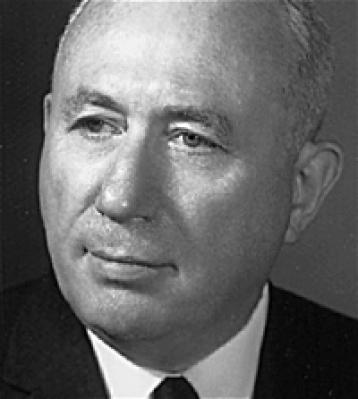
David Wittes
Still it wasn’t until the Depression of the 1930s that many men, desperate for any kind of job, thought about teaching. The promise of a steady job drew out-of-work Ph.D.s, accountants and even lawyers — men like Jules Kolodny, Dave Wittes and Charles Cogen who, over the coming decades, would play pivotal roles in the growth of teacher unionism.
Together with equally brilliant but professionally thwarted women, there evolved what many have argued was the greatest assembly of brain power ever in the schools. But if it was the Golden Age of talent, it was anything but golden for the teachers themselves.
These mind workers came cheap. The deepening Depression had all but wiped out the salary gains. With more qualified candidates than openings, teachers were in no position to bargain. The city had the upper hand and used it, cutting salaries and imposing one-month unpaid furloughs — even going so far as to coerce teachers into “voluntarily” contributing 5 percent of their pay for needy children. The School Relief Fund, as it was called, raised close to $6 million at the height of the Depression. While there’s no denying that the money went to a good cause — everything from a hot lunch program to clothing and eyeglasses — it amounted to yet another shakedown scheme. A little nudge from a supervisor or principal was all it took to leave teachers in a giving mood.
The Depression had given the Board of Education the chance to keep thousands of teachers in a permanent state of job insecurity. Instead of appointing a teacher to a regular position whenever there was a vacancy, the board filled it with a substitute. These “permanent substitutes” had no sick pay, no paid holidays or vacations, no pension, no health insurance — and they could be let go at any time with or without cause.
With as much as 25 percent of the teaching force employed as substitutes, management’s already considerable power got even stronger. Lacking even the slightest leverage, all teachers were forced to work under the most demoralizing conditions.
Pregnant? Leave now
Double and even triple sessions were not uncommon, especially during the post-WW II baby boom years. As part of a series called “The Scandal of Our Schools,” the New York Post reported in January 1952 that one Queens elementary school built for 1,140 students had an enrollment of just under 3,000.
The 48 children who jammed Alice Marsh’s first-grade class were typical. “My first year I had to leave 12 children back because I couldn’t get to them when they were slipping. This was par for the course.”
Lunch was no break. For elementary school teachers there was no such thing as a duty-free lunch period. Lunch, what there was of it, amounted to a sandwich gobbled down in makeshift, overcrowded rooms. “You lined up with your kids in the schoolyard and stayed with them the whole day, even eating with them — not even a bathroom break,” remembers Janet Miller.
As for sick pay: You needed a doctor’s note if you were out sick for even one day. No note, no pay.
Sabbaticals were a luxury few could afford, since the pay was only 40 percent of the regular salary.
It wasn’t until 1957 that teachers, along with other city employees, were allowed to participate in the government retirement and disability program.
And pensions? You got one, but not until you were either 65 or had logged 35 years of service.
Until 1937, teachers were forced to take a two-year, unpaid maternity leave. Though this was a far sight better than in the private sector, where maternity protection was rare, the practice of forced leave was a huge financial hit. Even later when the rules were relaxed, teachers were still required to report to their principals as soon as they became “aware” they were pregnant. But since admission meant you were required to leave immediately, teachers usually hid their condition until there was no denying the evidence. “You stayed until you showed,” said Phyllis Wallach, who favored loose jackets during her pregnancy in 1962.
Wallach scoffs at the idea that the board was simply worried about a woman’s health. “It was Puritanism, pure and simple,” she said. “God forbid students would see that their teacher was having sex. For them, exposing children to a pregnant teacher was akin to corrupting the morals of a minor.”
Three decades earlier, Alice Marsh’s elementary school principal had made known her disapproval of female married teachers. “I don’t see how you can stand in front of a class after you’ve slept with a man the night before,” Marsh remembers the principal saying.
Board and school authorities were intent on teachers setting a “proper example” for their students — so much so that very little about a teacher’s appearance, speech or even personal politics escaped their scrutiny. For example, while the board never had an official standard of “school attire” for teachers, many a principal drew the line when it came to sporting facial hair or men’s not wearing jackets, even in the hottest weather.
The Board of Examiners, which had the final say in the issuance of licenses, was a law unto itself, functioning as the educational equivalent of the medieval Star Chamber by allowing anonymous complaints against the character of candidates.
Free speech denied
In 1937, Albert Smallheiser, president of the Teachers Guild, challenged the Board of Examiners for capricious practices such as disqualifying candidates with a foreign accent for having “speech defects.” Even as late as 1950, “people who had foreign accents could forget it,” said Carrubba. “Even a distinct Brooklyn or Bronx accent was looked down on.”
It was an open secret that many racial and ethnic minorities were not welcome. In her book “Having Our Say,” Sadie Delaney tells of how she, a young black woman, had outwitted a bigoted principal. An elementary school teacher, Delaney had made it to the top of the seniority list for a high school appointment. All that stood in her way was an interview with the high school principal.
“At the appointment they would have seen I was colored and found some excuse to bounce me down the list,” wrote Delaney. Instead, she skipped the appointment and just showed up at the all-white Theodore Roosevelt HS on opening day. “Child, they just about died when they saw me.”
For Eastern European Jews and other immigrants, on the other hand, getting a job meant long hours learning how to break the board’s sound barrier. In anticipation of the dreaded oral interview, many a would-be teacher took the mandatory speech course at City College and fretted over how to avoid the dead giveaways.
Just how much of the board’s standards can be explained by simple prejudice will never be known.
There was no question, however, that certain forms of “speech” could get a teacher into trouble. In her book “My Daughter, the Teacher,” Ruth Markowitz tells of how one teacher in the 1930s was censured and warned by her principal not to “plant any seeds of doubt in her pupils’ minds.” Her crime? She asked her high school civics class “to debate whether President Roosevelt had too much or too little power.” Another was chastised for calling a number of congressmen “racists.” Still another was transferred after posting a union notice on the school bulletin board.
By the late 1940s, talk of “communist infiltration” of the schools was everywhere. Under the watchful eye of self-styled “patriotic” groups, a teacher’s every move — both inside and outside the classroom — might be scrutinized, weighed and interpreted. Even advocating what was then known as “inter-cultural education,” aimed at countering racism and anti-semitism, carried the danger of being found “disloyal.”
At any rate, by the mid-1950s, dozens of teachers had lost their jobs for refusing to answer questions put to them by school authorities about past or present membership in the Communist Party along with what books they read and who they saw at political rallies, etc.
The Teachers Guild of the late ’40s and early ’50s was bitterly divided over whether professed communists should be allowed to teach in the public schools. Years of watching small-party cadres frustrate democratic majorities had deeply embittered many non-communist teacher unionists. Many in the Guild ranks openly questioned their fitness for the classroom. Blind party loyalty, they argued, made it impossible for them to be “open-minded” and “independent.” It was a question that was hotly debated on the democratic left.
Yet, at the time, Communist Party-dominated unions were being expelled from both the AFL and the CIO for their slavish adherence to Stalinist dictums. The Teachers Guild followed suit, narrowly passing a resolution that called for the barring of communists from the classroom. They strongly opposed, however, efforts to force teachers to inform on one another.
Still, the identification of unionism with communism left average, apolitical teachers confused and wary. On top of this, the residual stigma had an undeniably chilling effect on both organizing activities and academic freedom. “People were afraid to be heard talking union,” recalled Si Beagle. Censored. Browbeaten. Overworked. Underpaid. Why, then, weren’t teachers lining up to join a union? Why was it that long after workers in mining, steel, automobiles, textiles, railroads and the building trades had organized, teachers were still turning a deaf ear to calls for unionization?
“The objective conditions for organizing teachers were always there,” said George Altomare. “We were every bit as exploited as blue-collar workers. In fact, I remember a former Board of Education president, some time in the 1950s, describing the board’s labor relations as 50 years behind the times.
“But we were divided. I guess you could say that before we could add and multiply, we had to figure out how to deal with division.
Originally published in New York Teacher, February 19th, 1996
